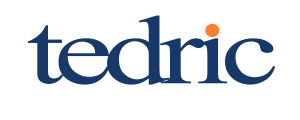
Türkiye Education Monitoring Report
Key Findings
Between 2017 and 2023, the number of general secondary education students increased by 44%, from 3.07 million to 4.4 million. However, there was a decrease of approximately 1 million in 2023-2024. This decrease was largely due to the deregistration of inactive students in distance education.
In 2024, the number of preschool and primary schools increased, while the number of middle and secondary schools decreased. The number of preschools increased by 3.41% and the number of primary schools by 0.25%. In contrast, the number of middle schools decreased by 0.3% and the number of secondary schools by 1.42%.
While the number of classrooms showed a steady increase between 2017 and 2023, the total number of classrooms decreased by 1.16% in 2024, from 751,000 to 742,000. The largest decline occurred in preschool education, at 4.08%, and in secondary education, at 2.55%.
The number of teachers in public kindergartens decreased by 6.9% in 2024, while the number of teachers in private kindergartens increased by 12.1%. Private preschool classes also experienced an 8.6% decrease.
The number of students in vocational and technical secondary education, which was 1.9 million in 2017-2018, decreased by 1.65% to 1.7 million in 2023-2024. However, the share of vocational high schools in total high school enrollment increased from 26.1% to 30.07%.
The number of students in secondary education, which was 789,000 in 2017, decreased to 431,000 in 2024. In 2024, there was a 4.7% decrease compared to the previous year. Following the Council of Higher Education's (YÖK) decision to close evening education programs at state universities, student admissions were held for the final time for the 2023-2024 academic year. As of 2024, the number of international students in Turkey increased by 11.49% compared to the previous year.
Recommendations
A comprehensive roadmap, including structural changes, should be developed to reduce dropout in general secondary education and make education more attractive. In this context, the reasons for the student loss experienced in 2023-2024 should be analyzed in detail, and students should be guided according to their interests and abilities. Within this framework, the connection between education and the labor market should be strengthened, and the opportunities provided by high school education should be diversified. Flexible and applied learning models that increase students' sense of belonging to educational institutions should be supported. The duration and format of compulsory education in secondary education should also be reviewed.
Institutional capacity planning should be conducted considering the balance between school levels.
Despite the increase in the number of preschool and primary schools in 2024, the decrease in the number of middle and secondary schools should be taken into account. Accordingly, school capacity plans should be based on population projections and local needs, ensuring a holistic transition and continuity between educational levels.
Changes in classroom capacity should be analyzed in line with local needs, and if deemed necessary, classroom investments in preschool and secondary education should be increased. Local needs analyses should be conducted to plan new classroom investments in necessary areas.
The appeal of vocational and technical education should be increased, and industry collaborations and employment opportunities should be strengthened. While the share of vocational high schools in total high schools is increasing, the 1.65% decline in student numbers necessitates a reevaluation of trends in this area.
Industry collaborations should be expanded to increase student interest, and attractive and visible employment opportunities should be offered to graduates, thus making vocational and technical education a sustainable option for young people.
Flexible and alternative learning models should be developed in higher education. The 4.7% decrease in the number of evening education students in the 2024-2025 period and the termination of these programs at state universities could pose a disadvantage, particularly for working individuals, in terms of access to higher education. These individuals' access to higher education should be supported through flexible models such as distance learning and hybrid applications.
Support mechanisms to sustain the interest of international students in higher education should be strengthened. To ensure the sustainability of the increase in the number of international students in higher education, scholarship opportunities should be expanded, and Turkish language preparatory programs and academic support services for international students should be expanded. Such incentives will increase Turkey's competitiveness in international education. Furthermore, policies should be developed to encourage qualified international students to come to Turkey.
